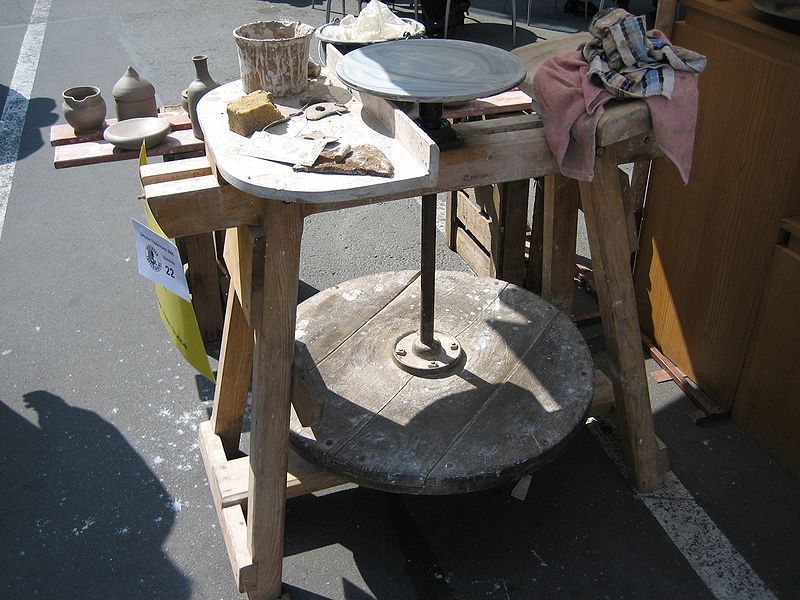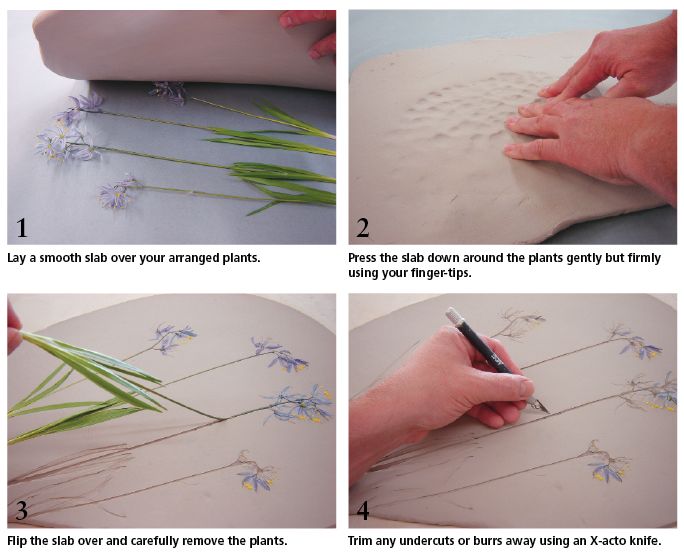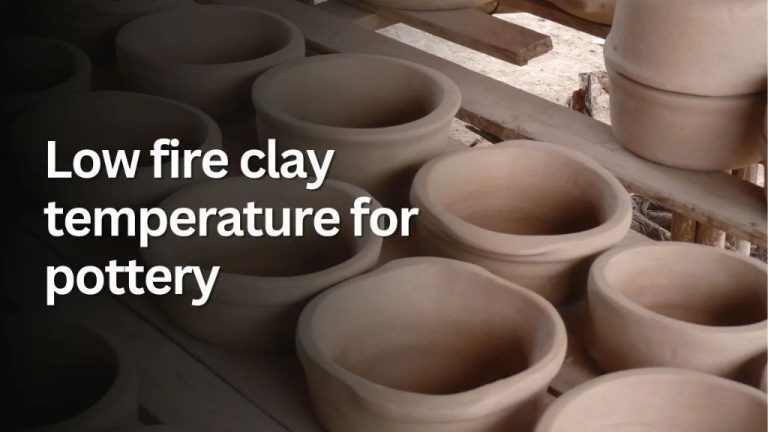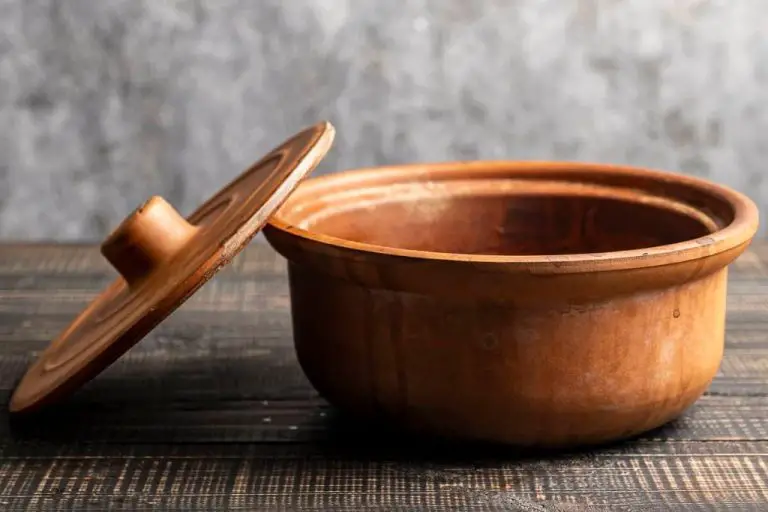What Is The Story Of The Potters Wheel?
A potter’s wheel is a machine used in the shaping of round ceramic ware. It allows the efficient production of symmetric pottery and consists of a rotating disk on which the potter can shape clay into ceramic pieces with ease. The potter’s wheel dates back thousands of years and remains an essential tool in pottery production to this day.
The potter’s wheel revolutionized the creation of pottery by enabling a new level of uniformity, symmetry, and efficiency in production. Before its invention, pots were shaped by hand through the coiling and paddling techniques, which limited the consistency of the finished products. The introduction of the potter’s wheel represented a major advancement in pottery technology and greatly accelerated the output of ceramic vessels and objects.
Overall, the potter’s wheel enabled the scaling and standardization of pottery production worldwide. It remains an iconic symbol of the potter’s craft and a key technology that elevated pottery making from a manual practice to an advanced art form. The wheel continues to be an indispensable tool for studio potters and ceramicists across cultures.
Origins
The earliest clear evidence of potter’s wheels comes from Mesopotamia (modern day Iraq), dating back to around 3500 BCE. Fragments of pottery interpreted as tournettes (slow wheels) have been found in archaeological excavations at Ur in Mesopotamia, dating from slightly later than 3000 BCE.[1] Spinning pottery wheels appeared in Mesopotamia by the end of the 4th millennium BCE, and then spread across the Near East and Europe in the following centuries.[1]
One of the earliest known ceramics made using a potter’s wheel comes from Uruk in Mesopotamia, dating around 3100 BCE. Tablets from later periods mention potters’ wheels in Mesopotamia, indicating the technology was well established by then.[1] Potter’s wheels then spread to the Iranian plateau and arrived in the Indus valley civilization by around 2700 BCE.[1]
Pottery wheels then spread across Europe and east Asia gradually over the following centuries. Early instances date back to around 2500 BCE in the Bronze age Minoan civilization on Crete and Mycenaean Greece.[1]
Early Designs
The earliest potter’s wheels were relatively simple devices made of wood, stone, or clay. According to Wikipedia, the first potter’s wheels found in Mesopotamia date back to around 3500-3000 BCE and were made of stone or clay. These early wheels likely consisted of a stone or clay disk that was spun by hand or foot while the potter shaped the clay vessel.

As described by the Pottery Wheel, some early Mesopotamian wheels had a pivot point and bearing to help rotate the wheel head. However, the wheel still had to be spun manually. Similar early wheel designs have been found in cultures across Europe, Asia, and the Middle East. These basic but important early devices enabled potters to create more uniform, symmetrical, and refined vessels than possible with hand modeling alone.
Over time, potters invented ways to rotate the wheel more efficiently, like using a stick or rope and developing the flywheel. But early potter’s wheels remained manually powered and required great skill to center and shape clay in motion. They provided an essential stepping stone to the fast-spinning mechanical wheels used by potters today.
Materials
Ancient potter’s wheels were made of a variety of materials, which impacted their function and capabilities. The earliest wheels found in Mesopotamia dating back to 3500 BCE were made of clay and turned by hand or foot [1]. These simple devices allowed potters to produce rounder, more symmetrical ceramic wares. Later wheels incorporated stone and wooden components for increased durability. For instance, ancient Egyptian wheels from 4000-3500 BCE featured a rotating stone platform, wooden table, and clay basin [2].
The development of the kick wheel around 2500 BCE utilized wood for the wheel and shaft components. This provided momentum for faster spinning using the potter’s foot. Sturdier wooden wheels enabled thinner-walled vessels and new shapes like plates and bowls. The materials and construction methods gradually improved, leading to efficient treadle wheels in Asia by at least 1300 BCE [3]. Overall, innovations in materials like wood, metal, and stone directly increased the capabilities and productivity of ancient pottery wheels.
Evolution
The potter’s wheel evolved significantly over thousands of years from its early beginnings to the modern mechanical wheels used today. The earliest wheels were simply a rotating platform operated by hand. According to the University of Colorado, the first wheels consisted of a turntable that was spun by hand or foot while the potter shaped the vessel.[1]
Major innovations occurred around 3500-3000 BCE when the ancient Mesopotamians attached the turntable to a vertical shaft and added a flywheel. This allowed momentum from the flywheel to sustain and smooth the rotation when spinning with the hand. The potter could now rotate the wheel continuously while shaping the clay. The flywheel became larger over time, further improving rotational momentum.[2]
Later developments included bearings to reduce friction in the spinning axle and a kick wheel operated by foot pedals instead of hand turning. The kick wheel with a flywheel became common across ancient civilizations including Egypt, Greece, Rome, China and Mesoamerica. Potters could now use both hands for shaping while their foot provided rotational energy via the kick wheel. According to Smith College, the kick wheel with momentum flywheel remained the standard potter’s wheel for millennia.[3]
In the 19th century, mechanized pottery wheels emerged, replacing human power with water wheels or steam engines. Modern electric motors now drive the rotation, freeing potters to focus entirely on crafting vessels by hand while the motor continuously spins the wheel.
Geographic Spread
The potter’s wheel originated in ancient Mesopotamia (modern day Iraq) sometime around 3500-3000 BCE, where the first evidence of wheel-thrown pottery has been found (de Groot, 2022). From Mesopotamia, knowledge and use of the potter’s wheel spread westward across the Mediterranean and into Europe. Archaeologists have evidence of wheel-thrown pottery dating back to 2500 BCE in Crete and mainland Greece, indicating the potter’s wheel reached these areas through trade and cultural contact with the Near East (Berg, 2020).
Over the next two millenniums, the potter’s wheel diffused throughout Europe and parts of Asia via land and maritime trade networks. By the height of the Roman Empire around 100 CE, wheel-thrown pottery production was widespread across the Mediterranean region and as far north as Britain. Archaeologists can track the spread of wheel technology by studying chemical compositions of pottery fragments, which indicate the clay sources used. The adoption of the potter’s wheel enabled faster and more consistent pottery production. As a revolutionary technology, its spread changed pottery-making methods across cultures and enabled thriving pottery trade.
Societal Impact
The invention of the potter’s wheel greatly increased the efficiency and scale of pottery production.1 What once took painstaking effort to produce by hand could now be quickly mass-produced. This allowed ancient cultures to generate pottery and ceramics for a wide variety of uses: from basic utensils and storage vessels to elaborate works of art.2
The increased volume of pottery production enabled new avenues of trade and commerce. Pottery became a valuable commodity that could be exchanged over long distances. The availability of more affordable ceramics also led to societal changes, as common people could now access utilitarian and decorative vessels. Overall, the potter’s wheel enabled pottery to become deeply embedded in many ancient cultures and economies.
Different regions developed their own distinct pottery styles aided by the wheel, reflecting local aesthetics and artistic sensibilities. From the intricate patterns of Chinese porcelain to the minimalist styles of Japanese raku, pottery came to represent cultural identities. The potter’s wheel allowed artisans to perfect and pass down techniques over generations. Even today, archaeologists rely on unique attributes of ancient pottery shapes and designs to understand past civilizations.
Modern Pottery Wheels
Contemporary and electric potter’s wheels offer many features and capabilities for modern potters. They typically have variable speed control and can spin very fast, up to 350 RPM. Many electric wheels come with digital displays and settings that allow precision speed adjustment. Some models have reversible directions for specific techniques. Foot pedals provide easy speed variation during throwing. Electric wheels with high torque motors can center and spin large amounts of clay smoothly. Features like splash pans, bat pins, and adjustable seat height add functionality. Advanced wheels may incorporate computerized speed control and pre-programmed speed cycles. Overall, modern electric wheels provide potters with excellent power, precision, consistency, and control.
Notable Potters
The potter’s wheel enabled many artisans throughout history to create beautiful and intricate pottery. Here are some of the most famous potters who used the wheel and created iconic works:
Bernard Leach (1887-1979) was an influential British potter who helped spread oriental pottery traditions in the West. He established the iconic Leach Pottery in St Ives, and created stoneware pieces like vases and tableware combining Eastern and Western aesthetics. His A Potter’s Book published in 1940 became a key text for studio potters.
Shoji Hamada (1894-1978) was a pioneering Japanese potter who created a huge corpus of work ranging from tea wares to vases. He studied ancient Chinese and Korean techniques and was acclaimed for combining tradition with creative individuality. His teapots, bowls and bottle forms are particularly prized. Hamada also travelled and taught in the USA and Europe.
Josiah Wedgwood (1730-1795) was an English potter who founded the Wedgwood company. He pioneered mass production techniques like division of labor and created innovative creamware and jasperware lines. His pottery was sought after by royalty and aristocracy due to their neoclassical style. Some of Wedgwood’s iconic designs are still produced and coveted today.
Lucie Rie (1902-1995) was an Austrian-British potter who escaped Nazi Europe and thrived in the UK. She pushed the boundaries of ceramic art with her signature bottles, bowls and buttons. Rie mastered the potter’s wheel to create finely thrown vessels with clean modernist lines. She drew acclaim for the purity and perfection of her forms. Rie’s works are held in major museum collections today.
Conclusion
The potter’s wheel has had a profound impact on human civilization over thousands of years. Its invention allowed potters to create symmetrical pottery and ceramic vessels with thinner walls, improved durability, and more consistent shapes and sizes. This revolutionized pottery production and also enabled further innovation as potters experimented with different vessels forms, glazes, and decorative techniques.
The potter’s wheel enabled mass production and distribution of pottery, transforming how human societies stored food, transported water and goods, cooked meals, and more. Over time, pottery became closely tied to cultural identity. Different regions developed their own styles, materials, and methods.
Today, the potter’s wheel continues to be an essential tool for studio potters around the world. Though much pottery production has become industrialized, the traditional wheel remains at the heart of creating handmade, high-quality ceramic wares. The potter’s wheel has left a lasting legacy and is a testament to human creativity and problem-solving across thousands of years of civilization.



